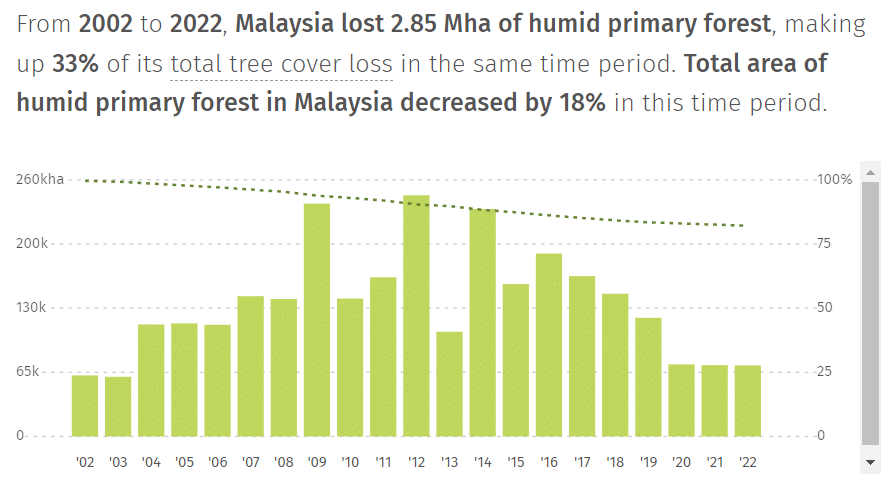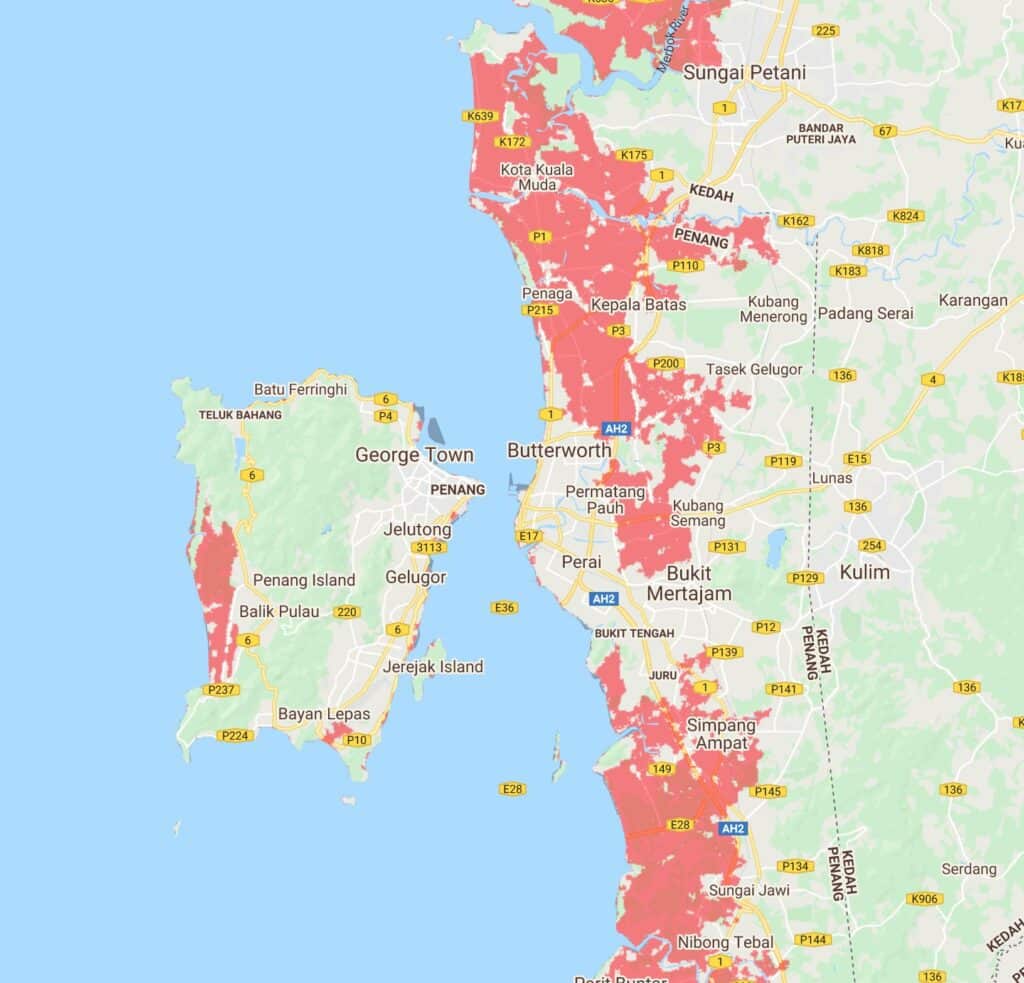Climate Change in Malaysia – Environmental Issues and Solutions
Photo Uwe Aranas / Shutterstock.com
04 April 2024 – by Eric Koons Comments (0)
Malaysia is known for its natural beauty, yet environmental degradation and climate change in Malaysia are becoming a central part of the country’s story. While this is partially due to the global impacts of climate change, the country’s actions are playing a significant role.
Its growing economy heavily relies on three key industries: shipping, oil and gas and palm oil. These industries, which comprise over 50% of the country’s GDP, create near-term environmental damage and long-term risks – such as global warming. As a result, the country needs to reassess its business practices, implement sustainable solutions and develop community-level adaptation strategies.
In response, the government put forward the Malaysia Renewable Energy Roadmap (MyRER), which targets 31% of the country’s energy needs as coming from renewables by 2035 and 40% by 2035, with the country becoming net-zero by 2050.
While this is a starting point, it doesn’t address the ongoing environmental damage from poor business practices, and energy experts question if the country’s planned policies are adequate to achieve MyRER’s goals.

What Is the Environmental Situation in Malaysia?
Diving deeper into the country’s leading environmental threats is crucial to understanding how Malaysia can improve. A survey from 2019 found that the country’s leading environmental issues were deforestation (38%), air pollution (26%) and water pollution (16%). Moreover, research shows that environmental degradation is one of the leading contributors to regional health issues, indicating that the environmental crisis has a multifaceted impact on public health.
Deforestation: Palm Oil Plantations
The issue of deforestation has been particularly alarming, driven in part by the lucrative palm oil industry. Malaysia is the world’s second-largest palm oil producer and is participating in extensive land clearing for plantations. Palm oil plantations cover 18% of the country’s land, and between 2002 and 2020, 27,000 square km of forest were cleared for palm oil production.
On a local scale, this leads to the loss of crucial habitats for numerous species, exacerbating biodiversity decline. Additionally, it contributes to soil and air pollution, erosion and water contamination. On a global scale, clear-cutting forests eliminates a natural carbon sink, and burning forests are a major source of emissions.

Air Pollution: The Main Pollutant
Malaysia’s air pollution is primarily a result of industrial manufacturing, power generation, vehicles and open burning activities, which peak during the dry season. This accounts for 32,000 avoidable deaths annually. Furthermore, 90% of the country’s population breathes air that exceeds World Health Organization (WHO) guidelines.
The financial implications of this are substantial as well. Air pollution leads to economic losses of USD 73 billion annually, nearly 20% of the country’s GDP. Meeting the 2021 WHO guidelines would save 22,000 lives and USD 51 billion annually.
Water Pollution: Declining Fisheries
Water pollution, albeit less headline-grabbing than air pollution or deforestation, is another pressing issue. The key contributors to this pollution are industrial waste, agricultural runoff and untreated sewage. While these pollutants endanger aquatic ecosystems, they also directly threaten human health by contaminating drinking water sources.
For an economy like Malaysia, whose fisheries sector is the 16th largest in the world, this has substantial economic repercussions. Additionally, water pollution in tourist hotspots can deter visitors, affecting an industry that accounts for 16% of the country’s GDP.
What Are the Future Impacts of Climate Change in Malaysia?
While these are the primarily immediate environmental threats, the country’s outlook on the impacts of climate change in Malaysia is also concerning.
Rising Sea Levels
According to the Intergovernmental Panel on Climate Change (IPCC), global sea levels will rise by between 0.26 and 0.77 meters by 2100. Given that about 40% of Malaysia’s population lives within the coastal zone, the implications of sea level rise are profound.
A recent study suggests that the coastal areas are already experiencing increased flooding, and rising sea levels could exacerbate this issue. In Penang, for example, the sea level is expected to rise by up to 7,320 mm per year until 2100, putting critical infrastructure, including water treatment plants and power stations, at risk.
Ocean Surface Maximum Temperatures Increased
The global ocean surface temperature has risen by about 0.13°C per decade over the last century. Even a minor change has profound implications for Malaysia, particularly its coral reefs and marine ecosystems. Elevated ocean temperatures lead to more frequent coral bleaching events, impacting biodiversity and fishing and tourism sectors.

Extreme Weather Events
According to the Global Climate Risk Index, Malaysia ranks 116th among the countries most affected by extreme weather events between 2000 and 2019. Floods have been particularly detrimental, with the 2014 east coast flood affecting over 200,000 people. In addition, temperatures will intensify, highlighted by the record-setting heat wave that hit the region in 2023.
The escalating frequency and severity of extreme weather events pose a significant risk to Malaysia’s economy, including critical sectors like energy production, real estate and agriculture. Financial institutions, especially insurers and banks, face increasing risk factors that necessitate higher premiums and stricter lending conditions.
Human Health Impacts
Climate change poses a growing threat to public health in Malaysia, primarily through the proliferation of vector-borne diseases and heat-related illnesses. In 2019, rising temperatures and increased rainfall led to more frequent outbreaks of diseases like dengue fever, with 130,101 reported cases and 182 fatalities. Moreover, the United Nations warns that climate-sensitive diseases, such as malaria and dengue, are likely to spread further as climate change worsens.
The impact on human health isn’t limited to infectious diseases. Heat stress and respiratory issues are linked to higher levels of air pollution and prolonged heat waves. These health impacts put an added strain on Malaysia’s healthcare system and underscore the need for comprehensive public health strategies that integrate together with climate change adaptation measures.
Facing the Inevitable Impacts of Global Warming in Malaysia
The compounding effects of climate change and environmentally damaging practices in Malaysia necessitate urgent and comprehensive action. Focusing on renewable energy is a step in the right direction, but more is needed. There is a need to reassess business priorities to balance long-term sustainability and near-term profitability to mitigate climate change.
Ultimately, Malaysia can limit climate change’s impacts by implementing a multi-pronged approach that includes transitioning to renewables and investing in education and infrastructure to adapt to the inevitable changes.
by Eric Koons
Eric is a passionate environmental advocate that believes renewable energy is a key piece in meeting the world’s growing energy demands. He received an environmental science degree from the University of California and has worked to promote environmentally and socially sustainable practices since. Eric’s expertise extends across the environmental field, yet he maintains a strong focus on renewable energy. His work has been featured by leading environmental organizations, such as World Resources Institute and Hitachi ABB Power Grids.
Read more



